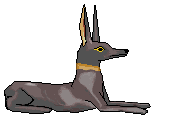Ancient Egyptian Brought Back To Life (NEW DOCUMENTARY)
- Curtis Ryan Woodside

- Mar 25, 2020
- 4 min read
Updated: Mar 26, 2020
A few months ago I collaborated with the Museo Archeologico di Napoli to create this NEW DOCUMENTARY investigating an ancient couple using photographic techniques. Now you can watch it on YouTube! And continue down for a more in-depth look at the Captain of Ramses II ships!
The Museo Archeologico in Naples italy, is one of many museums around the world that have Egyptian collections. However, this collection contains many fascinating pieces, from an ink pot shaped as a baboon, a mummified crocodile, And the remains a woman dating back from the reign of Psusennes, the silver pharaoh. Apart from Pharaohs and Gods, I went to the museum in Italy to investigate an ordinary married couple’s life, and, their death, and bring them back to life.
Pa-san-e-sut and his wife Tan-et-met. They lived around 3250 years ago in Thebes.
They were buried in the valley of the nobles, and worked for non other, than Ramses II.
Pas-an-e-sut was in fact the chief captain for ramses the seconds ship. …
Have a look at the original Tomb wall Fragment, and the recoloured version based off of the flecks of paint that remained.
Ramses the second lived around the mid part of Egypts history. In fact Cleopatra was much closer to us, & lived at 30bc. 3200 years before, Egypt was unified by king Narmer, that’s around 5000 years ago, in the middle of this time frame comes the famous Tutankhamun, less than 20 years after tut, came Ramses The Great. In ancient egypt boats played a very important role, not only in everyday life, but also in religious beliefs.

Ramses had a large fleet of ships to travel all along the nile, for either religious ceremonies, or to travel in military campaigns. Ships were also used to transport stone to build monuments. Since Pasanesut lived near the end of ramses life, and was afforded a tomb, he was no doubt the captain that directly transported the king, maybe even on his final journey.
Naples have 4 objects that were made for the captain and his wife, 2 stele and 2 fragments from his tomb are currently on display. We aren't sure about the exact location of his tomb it was found in the late 1700’s and items being added to the Borgia collection, not much archeological evidence is available on its exact location, most nobles were afforded a tomb in the hills behind the colossi of memnon, yet experts believe his tomb is located in Saqqara.
Never before have I seen such a scene. Pa-san-e-sut is standing at the edge of a hill, where we his wife emerging from the Tomb. They are both holding sails, catching the wind from the North. He offers a table of food, where his Ba bird is coming to accept the offering. It is amazing to see such a scene, as they are holding ships sails, which connects back to his job to the Pharaoh.

However, when you investigate closer, this was once fully coloured!
Using our photographic skills, we can enhance these remaining colours. And thus, I can bring them back to life. Over 3000 years can cause the paint to chip off from humidity and natural causes. The ancient Egyptian used a mixture of organic pigments, water and egg white to make paint. The most common colours were red and yellow as they could be extracted from the rocks around them, white from lime stone, and black from coal were also used. The most expensive were greens and blue as they were made from ground precious stones such as lapis and turquoise. The powders were mixed together with the water and egg white to get the desired colour and texture. When we magnify our artefact, close up the
small flex of original colour can be seen.



On this funerary stele we can notice Anubis seated at the top, guarding the tomb and welcoming the souls into the next life. Below is Isis to the left, Osiris and then Pasanesut who is offering flowers and foods to the god of the afterlife. Below we see Pasanesut and his wife receiving offerings of incense and perfumed oils from their 2 children. on the very bottom right is a small female figure, which is probably Pasenesut's granddaughter.
On the stele below, we see a smilier scene as above, however we notice Isis and her sister Nephtys, and a rather more elaborate offering table, before the 4 figurines of the sons of Horus balanced on the lotus, symbolising rebirth (Since these figurines were used on chaotic jars which contained the mummified organs of the deceased) Pasanesut is joined by his wife and his daughter who are bringing bundles of Lotus flowers. He is anointing the offerings, which include bread, lettuces, onions, meat and a pomegranate atop a model boat - linking back to Pasanesut's job. Below this scene we can see the couple seated, receiving offerings for their souls in the next life from their son who is dressed in the Leopard/Cheetah skin generally of a high priest. To the right is a very interesting scene showing the couple bowing before the tree goddess who has taken the guise of the cow headed Hathor combined with Isis (very unusual for the tree goddess) She is giving fruit and pouring water for the couple who are joined by their Ba Bird (Spirit) which could travel between this world and the next.

When we look at these artefacts from ancient Egypt, we have to remember that these people are not just scientific studies documented in books, they were real people, with the same hopes, fears and emotions that we have today. Next time you visit a museum like this one in Napoli, try to see these items as part of your history.












Comments